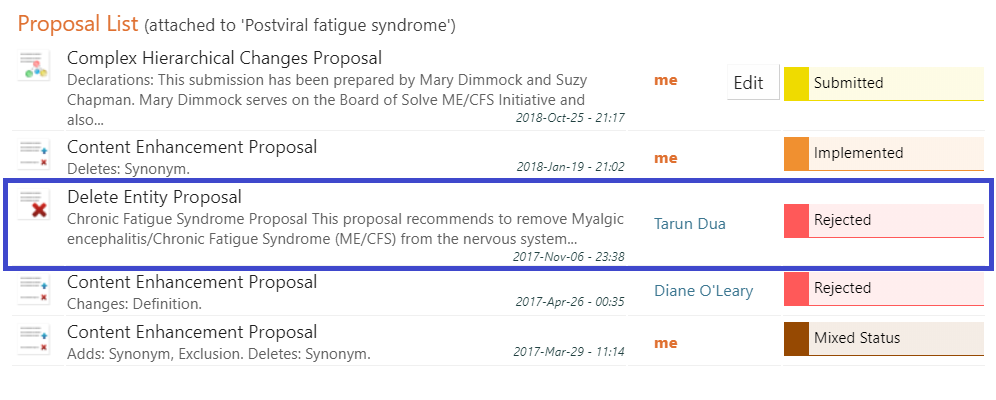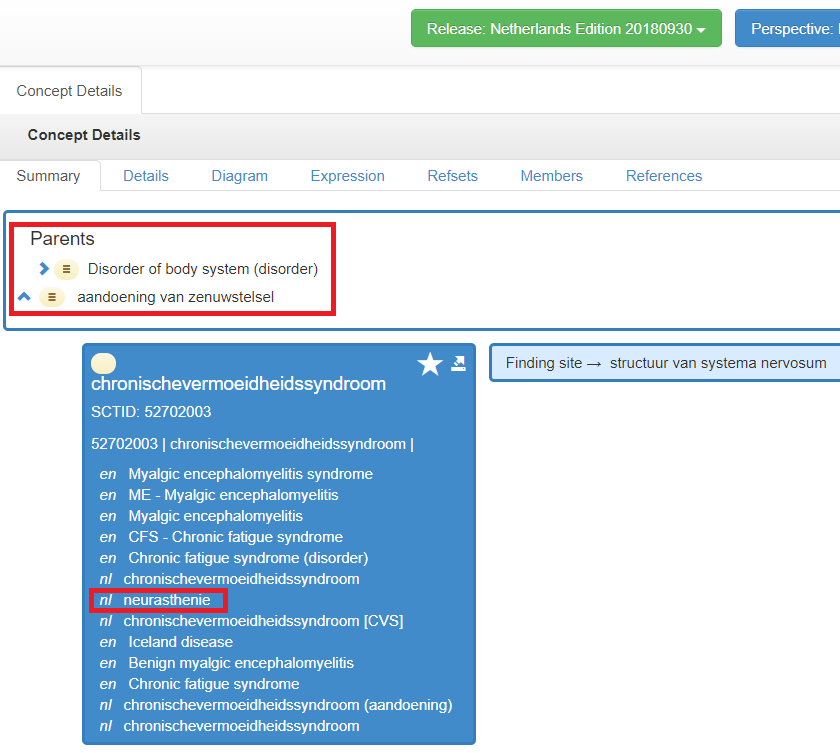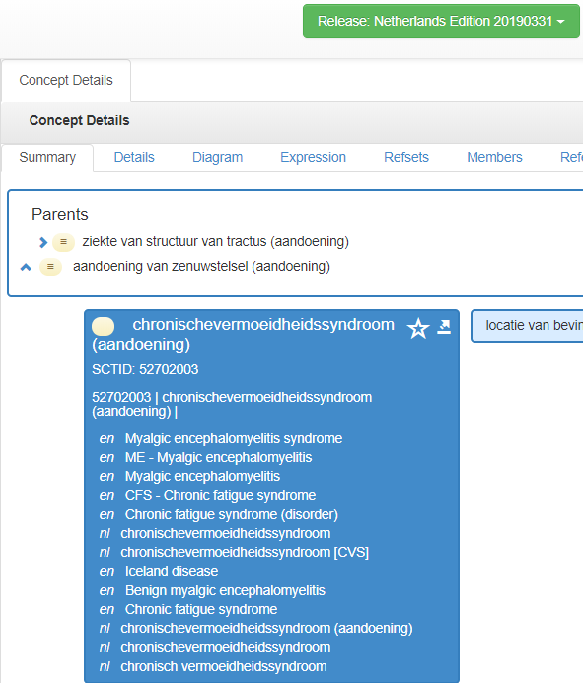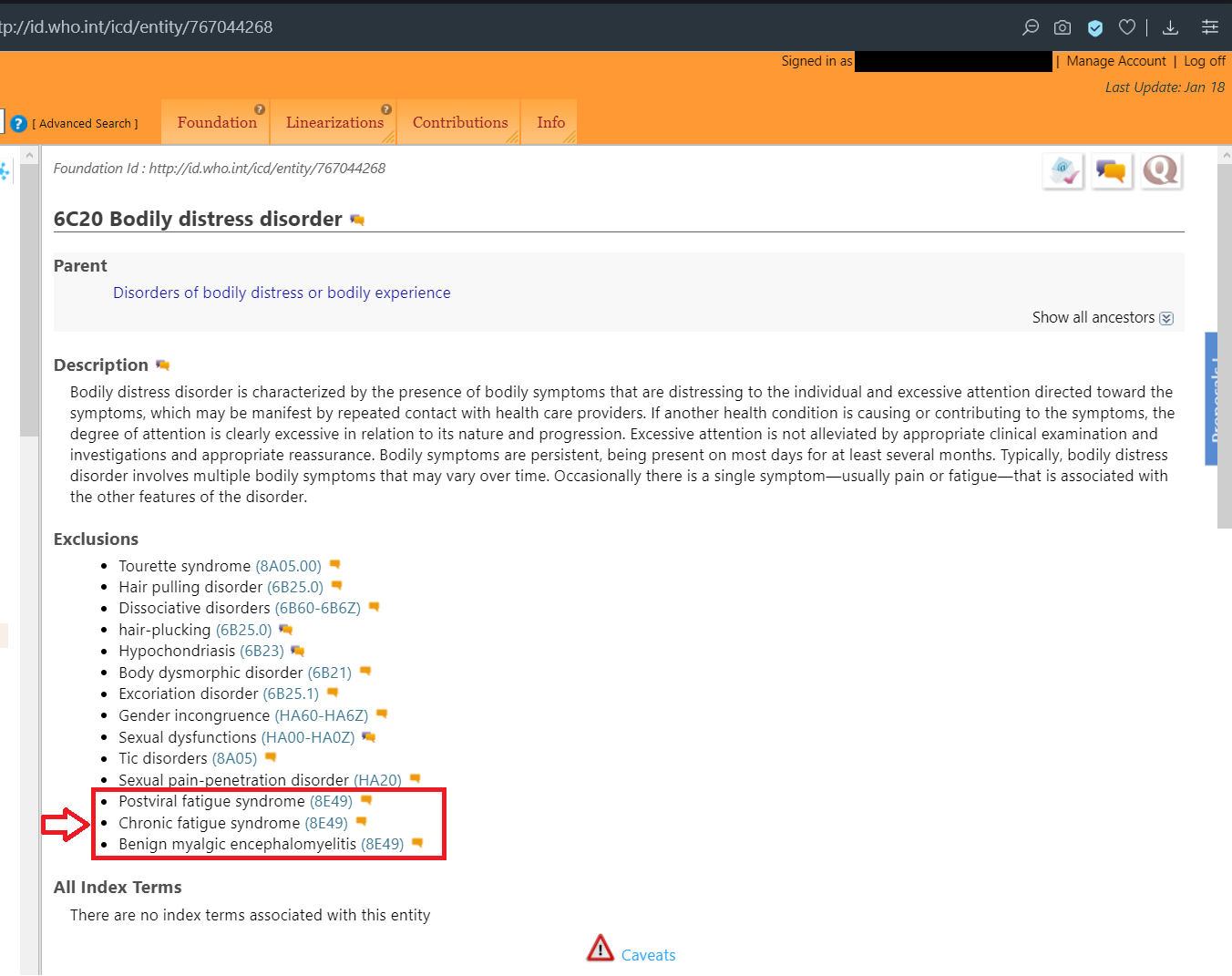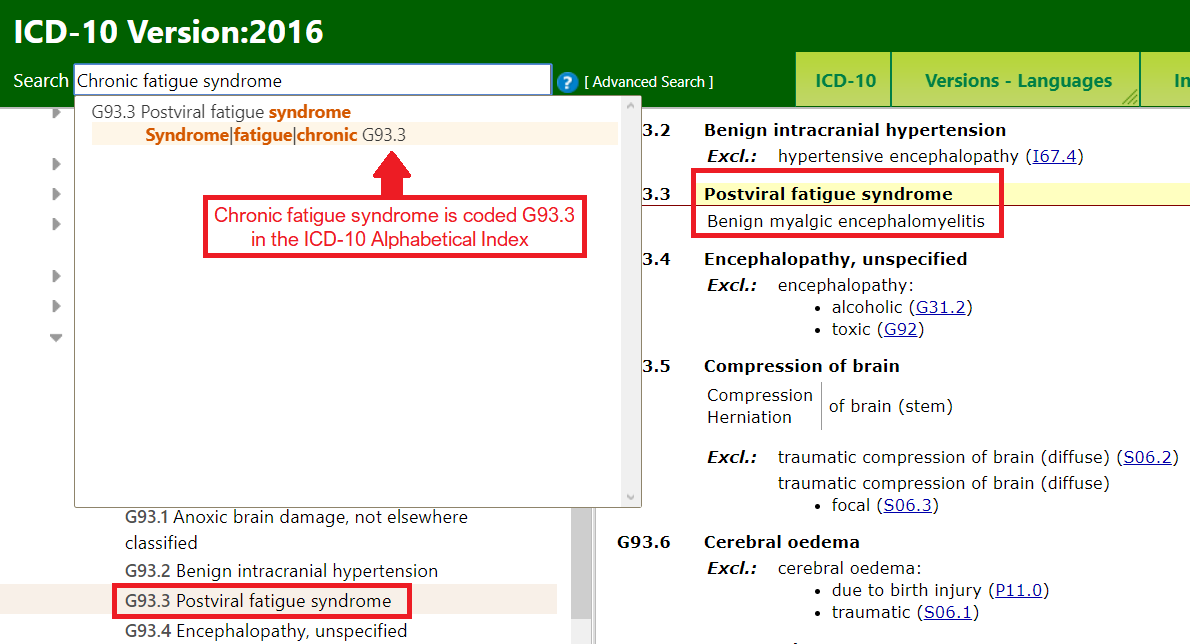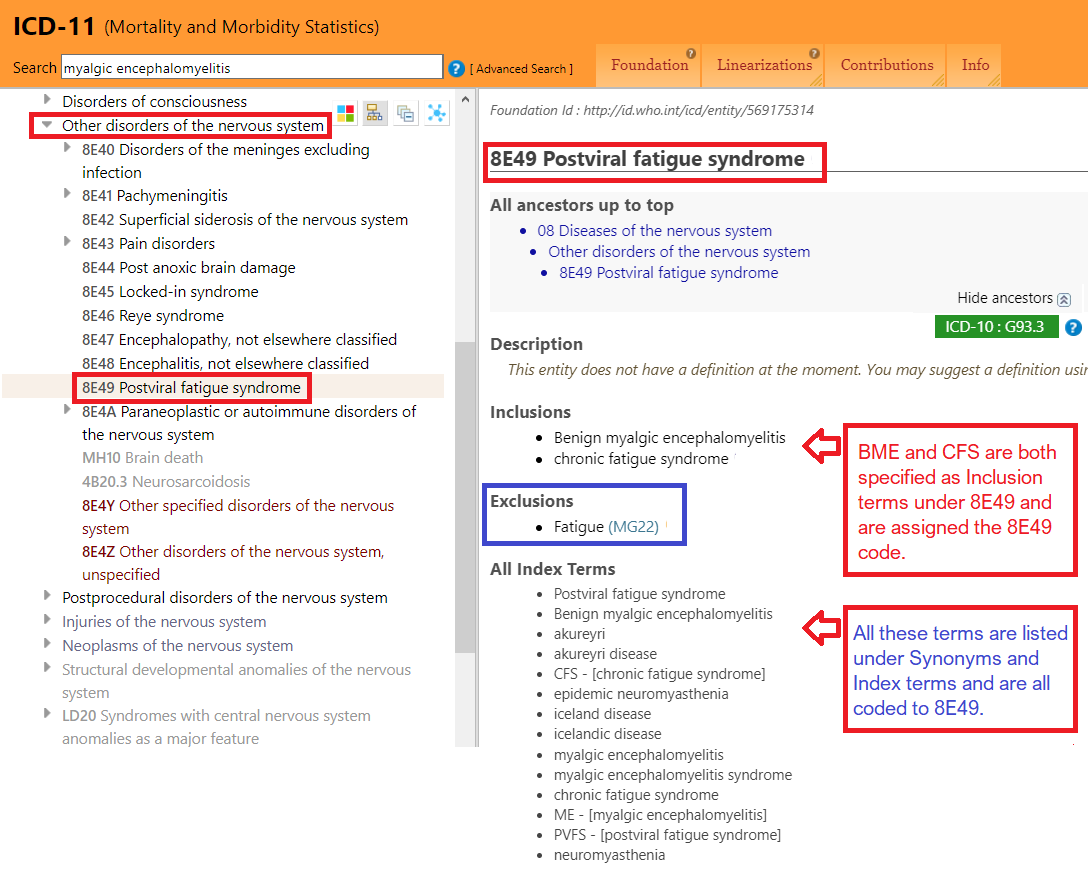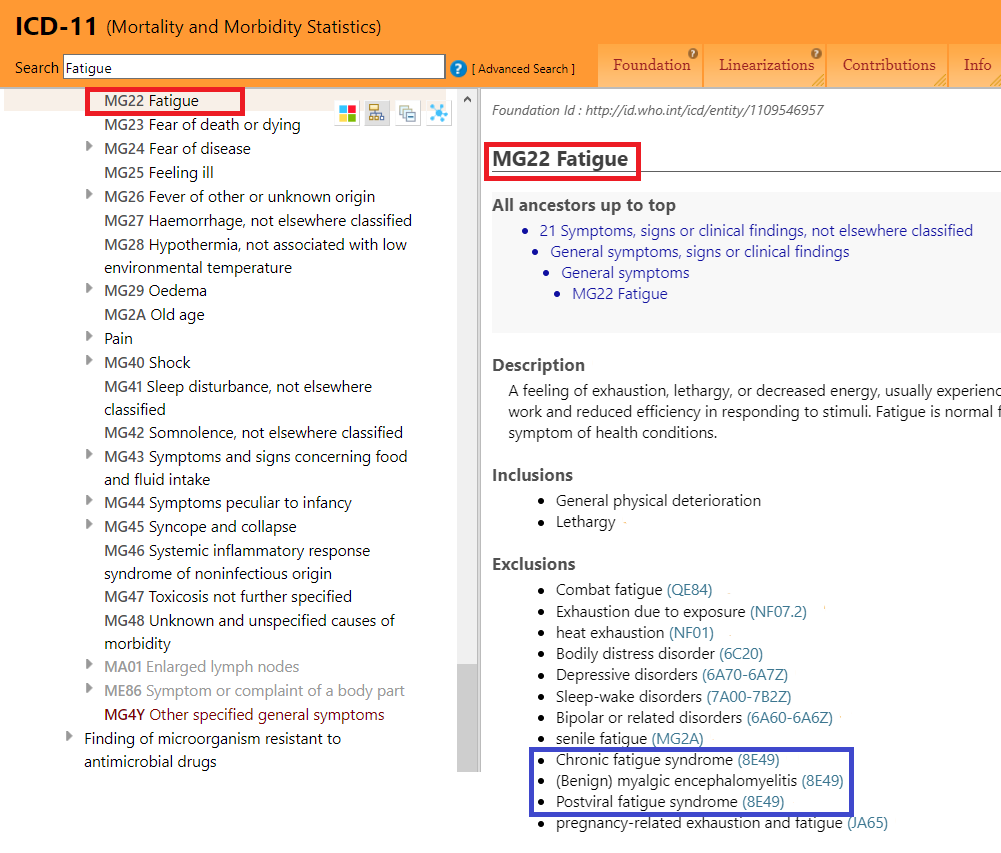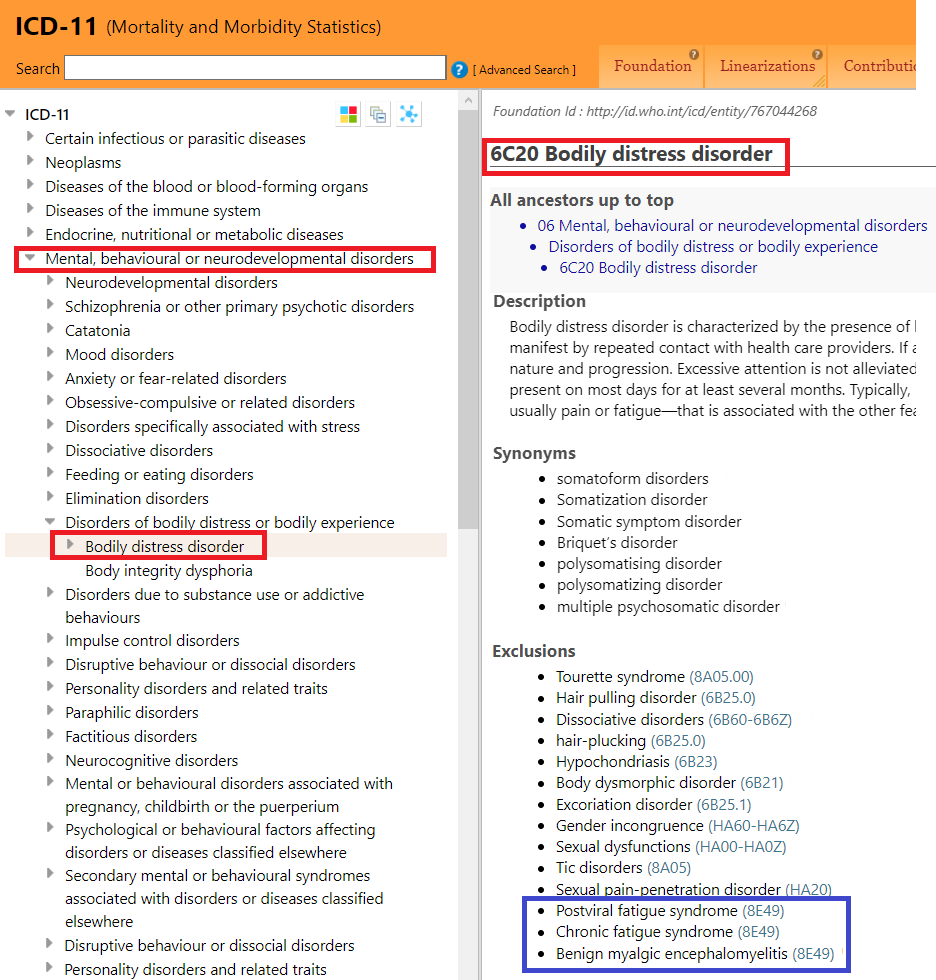Dx Revision Watch
Suzy Chapman Owner of Dx Revision Watch
- Messages
- 3,061
- Location
- UK
SNOMED CT UK Edition release 20181001
The October 01 release of the SNOMED CT UK Edition is now available from the NHS Digital public version of the SNOMED CT browser.
This UK release incorporates the addition of the parent "Disorder of nervous system" for CFS and terms under Synonyms, as approved and implemented for the July 2018 release of SNOMED CT International Edition.
SCTID: 52702003 Chronic fatigue syndrome (disorder) is now classified under supertype SCTID: 118940003 Disorder of nervous system (disorder).
Concept: SCTID: 52702003: Chronic fatigue syndrome (disorder) was already mapped in the SNOMED CT to ICD-10 cross map to G93.3 Postviral fatigue syndrome. This change of parent Concept or supertype consolidates that existing relationship.
SNOMED CT UK Edition release 20181001
https://termbrowser.nhs.uk/?perspec...gRefset=999001261000000100,999000691000001104
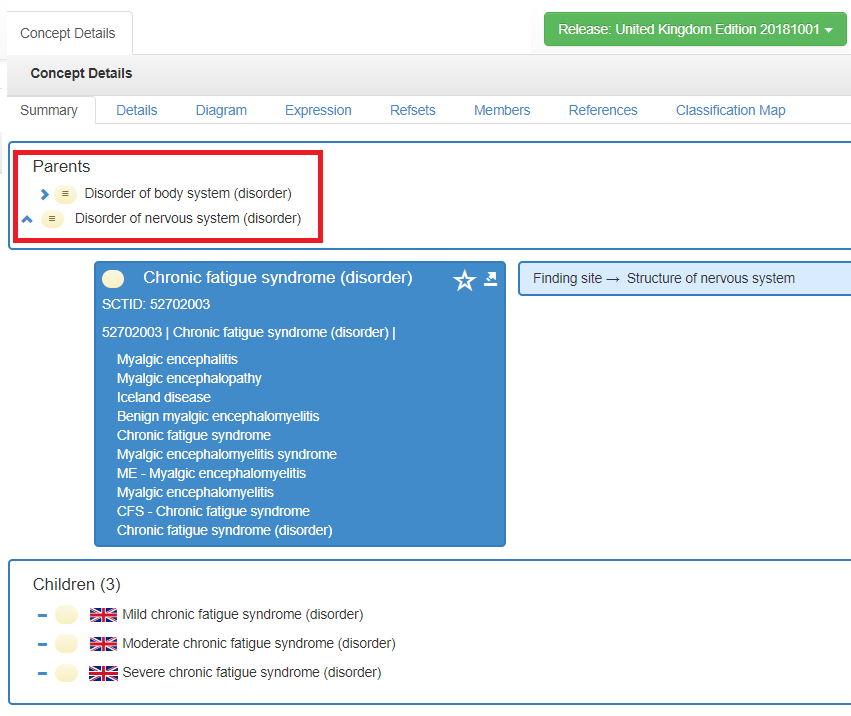
A copy of my full statement on the addition of the Disorder of nervous system parent for CFS and its Synonyms terms can be downloaded here:
PDF: Statement on SNOMED CT and Chronic fatigue syndrome August 2018:
https://dxrevisionwatch.files.wordp...snomed-ct-and-chronic-fatigue-syndrome-v1.pdf
Edited to insert:
The October release of the Canadian Edition has been now been posted
SNOMED CT Canadian Edition release 20181030
http://browser.ihtsdotools.org/?per...omed&langRefset=19491000087109,20581000087109
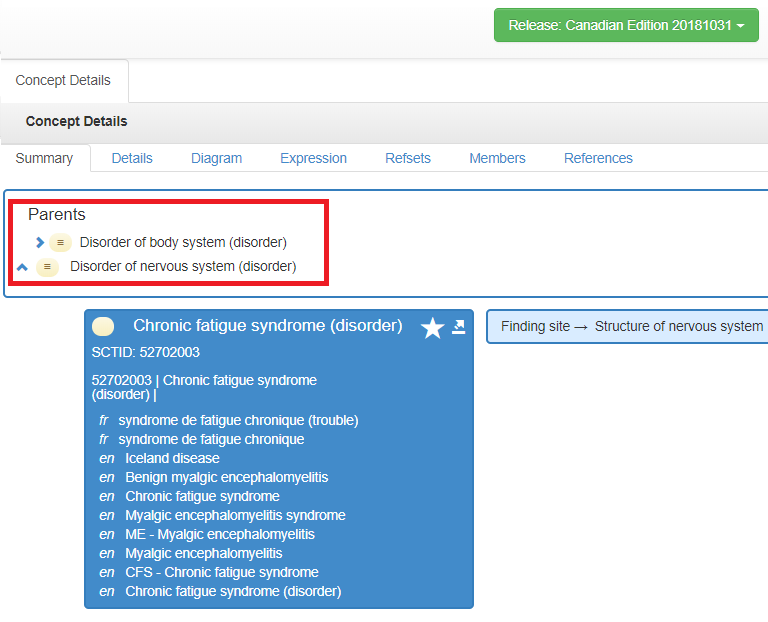
Edited to insert:
The November release of the Swedish Edition has been now been posted
SNOMED CT Swedish Edition release 20181130
https://browser.ihtsdotools.org/?pe...g/api-exten/snomed/&langRefset=46011000052107
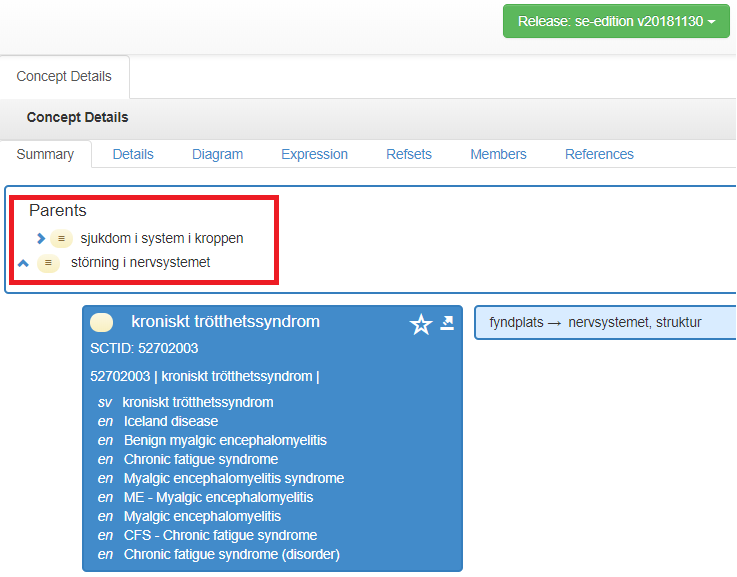
Note: the Swedish Edition includes a separately coded for Concept term:
SCTID: 55941000052101 | kronisk trötthet | [Chronic fatigue (finding)].
This is marked with the Swedish flag symbol to denote that this SNOMED CT Concept term is exclusive to the Swedish Edition. It can be viewed here:
https://browser.ihtsdotools.org/?perspective=full&conceptId1=55941000052101&edition=se-edition&release=v20181130&server=https://browser.ihtsdotools.org/api-exten/snomed/&langRefset=46011000052107
------------------
The November 30 release of SNOMED CT Argentinian Edition is also published:
SCTID: 52702003 síndrome de fatiga crónica (trastorno)
https://browser.ihtsdotools.org/?pe...ls.org/api-exten/snomed/&langRefset=450828004
Incorporation into other national editions
The next release of the Uruguay Edition is scheduled for December 15;
The January 31, 2019 release of the Australian Edition is now available:
https://browser.ihtsdotools.org/?pe....org/api/snomed/&langRefset=32570271000036106
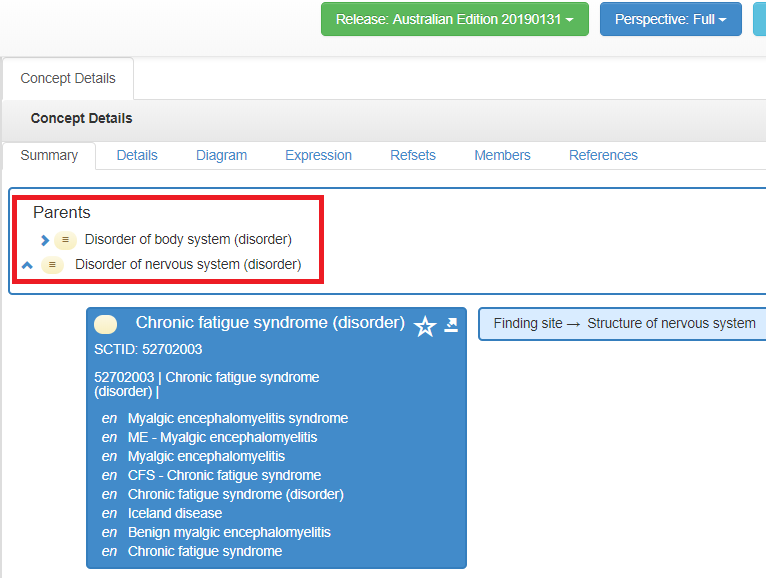
If your country is a member of SNOMED International but does not have a publicly accessible browser hosted on the International Edition platform or hosted on its own platform, please refer to your country’s SNOMED CT National Release Centre website for the release schedule.
The October 01 release of the SNOMED CT UK Edition is now available from the NHS Digital public version of the SNOMED CT browser.
This UK release incorporates the addition of the parent "Disorder of nervous system" for CFS and terms under Synonyms, as approved and implemented for the July 2018 release of SNOMED CT International Edition.
SCTID: 52702003 Chronic fatigue syndrome (disorder) is now classified under supertype SCTID: 118940003 Disorder of nervous system (disorder).
Concept: SCTID: 52702003: Chronic fatigue syndrome (disorder) was already mapped in the SNOMED CT to ICD-10 cross map to G93.3 Postviral fatigue syndrome. This change of parent Concept or supertype consolidates that existing relationship.
SNOMED CT UK Edition release 20181001
https://termbrowser.nhs.uk/?perspec...gRefset=999001261000000100,999000691000001104

A copy of my full statement on the addition of the Disorder of nervous system parent for CFS and its Synonyms terms can be downloaded here:
PDF: Statement on SNOMED CT and Chronic fatigue syndrome August 2018:
https://dxrevisionwatch.files.wordp...snomed-ct-and-chronic-fatigue-syndrome-v1.pdf
Edited to insert:
The October release of the Canadian Edition has been now been posted
SNOMED CT Canadian Edition release 20181030
http://browser.ihtsdotools.org/?per...omed&langRefset=19491000087109,20581000087109

Edited to insert:
The November release of the Swedish Edition has been now been posted
SNOMED CT Swedish Edition release 20181130
https://browser.ihtsdotools.org/?pe...g/api-exten/snomed/&langRefset=46011000052107

Note: the Swedish Edition includes a separately coded for Concept term:
SCTID: 55941000052101 | kronisk trötthet | [Chronic fatigue (finding)].
This is marked with the Swedish flag symbol to denote that this SNOMED CT Concept term is exclusive to the Swedish Edition. It can be viewed here:
https://browser.ihtsdotools.org/?perspective=full&conceptId1=55941000052101&edition=se-edition&release=v20181130&server=https://browser.ihtsdotools.org/api-exten/snomed/&langRefset=46011000052107
------------------
The November 30 release of SNOMED CT Argentinian Edition is also published:
SCTID: 52702003 síndrome de fatiga crónica (trastorno)
https://browser.ihtsdotools.org/?pe...ls.org/api-exten/snomed/&langRefset=450828004
Incorporation into other national editions
The next release of the Uruguay Edition is scheduled for December 15;
The January 31, 2019 release of the Australian Edition is now available:
https://browser.ihtsdotools.org/?pe....org/api/snomed/&langRefset=32570271000036106

If your country is a member of SNOMED International but does not have a publicly accessible browser hosted on the International Edition platform or hosted on its own platform, please refer to your country’s SNOMED CT National Release Centre website for the release schedule.
Last edited:

